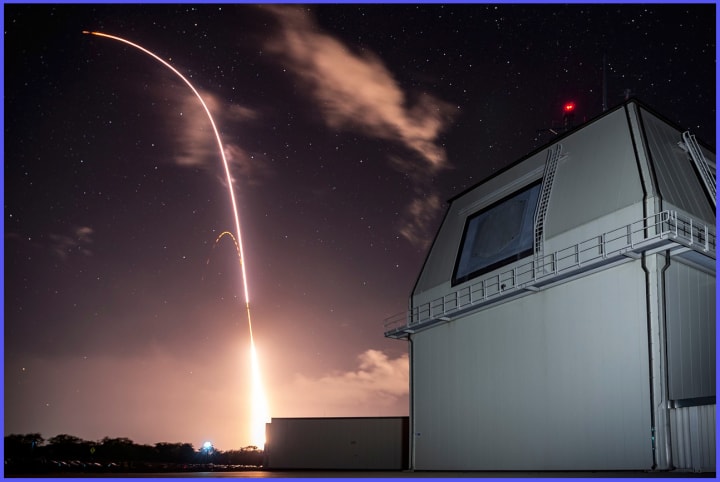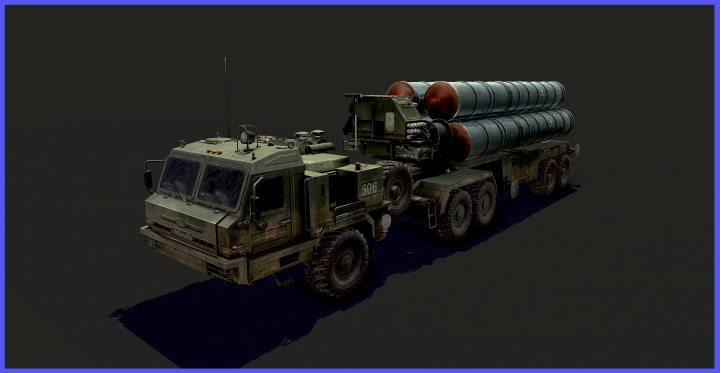Navigating Precision: The Missile Guidance Systems of Indian Akash and S-400 SAM
By AirPra

There are several types of guidance systems suited to different purposes and operating environments. Before delving into the specifics of the Missile Guidance Systems on Indian Akash and S-400 SAM (Surface-to-Air Missile), it is essential to first understand missile guidance.

About Missile Guidance
Missile guidance refers to the technology and methods employed to ensure a missile accurately reaches its intended target. The guidance system typically consists of several components, including sensors, processors, and control mechanisms. Sensors, such as radar, infrared, or GPS, detect the missile’s position and the location of the target. These inputs are then processed by onboard computers to calculate the necessary adjustments to the missile’s trajectory. The accuracy of the missile’s target is a crucial determinant of its effectiveness. Guidance systems enhance missile accuracy by increasing its Probability of Guidance (Pg).
Several types of guidance systems are suited to different purposes and operating environments. Inertial guidance relies on internal sensors to track the missile’s motion relative to its starting point. This system is robust but can drift over time. Terminal guidance systems are employed during the final phase of the missile’s flight to ensure precise targeting. These may include radar or imaging systems to identify and lock onto the target.

Guidance systems can be further categorized based on whether autonomous or guided remotely. Autonomous systems involve making decisions onboard the missile, whereas remote guidance entails external control by a human operator or another platform. These guidance technologies can generally be divided into several categories, with the broadest ones being "active," "passive," and "preset" guidance.
Missiles and guided bombs typically employ similar types of guidance systems. The primary distinction lies in the propulsion method: missiles are propelled by an onboard engine, while guided bombs depend on the speed and altitude of the launching aircraft. Advancements in missile guidance technology have greatly improved accuracy and effectiveness, allowing for precision strikes even at long distances. Modern guidance systems often incorporate multiple sensors and sophisticated algorithms to overcome challenges such as jamming and countermeasures, ensuring reliable performance in diverse operational scenarios.

Maximizing Precision: Missile Guidance Systems on Indian Akash and S-400 SAM
Both the Akash and S-400 SAM systems utilize command guidance and active radar-homing technologies to offer flexibility, precision, and autonomy in engaging aerial threats. In the initial stage, upon launching the missile, command guidance allows operators to manually control missile trajectories based on scenarios such as fast and agile targets like fighter aircraft or ballistic missiles with changing trajectories.
This capability helps to position the interceptor missile close to the target. In the second stage, active radar homing enables missiles to autonomously track and intercept targets using onboard radar seekers during their terminal phase. These advanced technologies enhance the overall effectiveness of the Akash and S-400 SAM systems in air defence operations. (Note: Although some interceptor missiles of the S-400 use Semi-Active Radar Homing (SERH) as well.)

Understanding Command Guidance Technology in Detail
Command guidance technology involves external operators or systems guiding a missile manually towards its target. It operates by continuously transmitting commands to adjust the missile's trajectory based on real-time tracking of the target. This method allows for precise adjustments for changing target movements or environmental conditions. This control may also command the missile to detonate, even if the missile has a fuze.
Command guidance systems typically depend on radar or other sensors (such as radio antennas) to track the target and communicate with the missile. Operators within a command and control centre analyze sensor data and issue guidance commands to the missile in response to evolving threats. If the target manoeuvres, the guidance system can detect this and continuously update the missile's course to counteract such manoeuvres. When the missile approaches the target closely, its proximity or contact fuse will detonate the warhead, or the guidance system can estimate when the missile will pass near a target and transmit a detonation signal.

For heightened accuracy, a ground-based tracking station typically incorporates two or more radar antennas: one specifically for tracking a missile and one or more for tracking targets. These systems are often capable of communicating with a missile using the same radar energy employed for tracking it.
Command guidance provides flexibility in engaging targets, especially in scenarios where autonomous guidance may be less effective. It ensures that operators retain direct control over the missile's trajectory, enabling them to adapt to dynamic operational environments. This technology is employed in various missile systems, including air defence systems, anti-ship missiles, and guided bombs, enhancing their accuracy and effectiveness in engaging targets.

Understanding Active Radar-Homing
Active radar homing is a guidance technique employed in missiles, wherein the missile emits radar signals to detect and track its target, which contains a radar transceiver. Unlike semi-active radar homing, where the missile relies on radar signals from an external source, active radar homing systems feature an onboard radar seeker that actively scans the surrounding airspace for the target. Once the target is detected (meaning, once radar signals bounce off the target and return to the missile's onboard radar receiver), the radar seeker continuously tracks its position, enabling the missile to autonomously adjust its trajectory to intercept the target.

Active radar homing offers several advantages, including increased independence from external guidance systems, improved resistance to electronic countermeasures like jamming or decoys, and enhanced accuracy in engaging fast-moving or manoeuvring targets. The technology allows for effective engagement of targets beyond the range of semi-active radar homing systems and is particularly suitable for long-range air-to-air missiles, surface-to-air missiles, and anti-ship missiles.
Overall, active radar-homing technology represents a critical advancement in missile guidance, providing missiles with the autonomy and accuracy needed to engage targets effectively in various operational scenarios.

In conclusion, both the Indian Akash and the S-400 SAM systems employ advanced missile guidance technologies to counter aerial threats effectively. The Akash system utilizes active radar homing and can incorporate command guidance for added flexibility.
Conversely, the S-400 system integrates multimode guidance capabilities, including semi-active and active radar homing, alongside a sophisticated command and control infrastructure. These technologies enable both systems to achieve high levels of accuracy, reliability, and adaptability in defending against airborne threats.
About the Creator
Prajesh Majumdar
Hi there, I'm Prajesh, the creator of airpra.com
The site is dedicated to nurturing a community of individuals with a keen interest in exploring the intricate aspects of defence equipment and related news.
Enjoyed the story? Support the Creator.
Subscribe for free to receive all their stories in your feed. You could also pledge your support or give them a one-off tip, letting them know you appreciate their work.






Comments
There are no comments for this story
Be the first to respond and start the conversation.